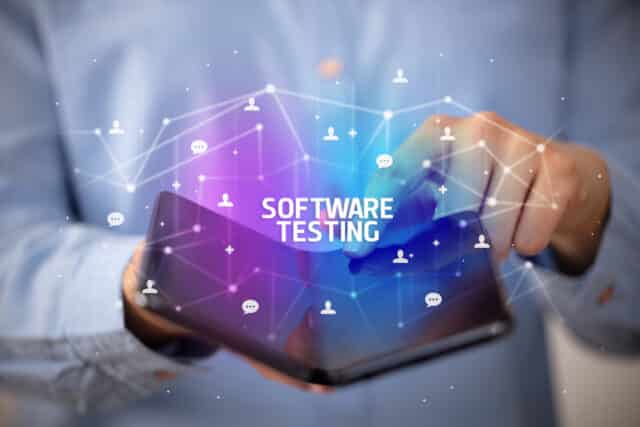How AI is having an impact on software testing [Q&A]

Artificial intelligence is making its way into many areas of the tech industry, with the introduction of large language models making it much more accessible.
One of the areas where it's having a big impact is software testing, where it allows companies to provide better support to existing software teams and refocus their efforts on development.
We spoke to Tal Barmeir, CEO of BlinqIO to find out more about how AI is being used in the testing field.
BN: How is BlinqIO using AI to improve software testing?
TB: The core of BlinqIO's technology centers around a sophisticated fusion of Generative AI and machine learning techniques. It's similar to having a virtually limitless resource of human-like testers, that can seamlessly integrate into the development process. Our platform is SaaS-based and enables us to leverage the power of generative AI in the testing world. The platform allows generative AI to perform the work of a test engineer autonomously. These 'engineers' operate through large language models (LLMs), machine learning algorithms, automated test selection and execution, self-evolving test script generation and intelligent failure analysis and debugging. In essence, BlinqIO transcends simple automation. We harness the power of generative AI to create a dynamic and intelligent testing ecosystem that continuously learns and adapts, delivering comprehensive and efficient software testing for the modern age.
BN: What exactly are large language models and how do they work?
TB: LLMs are sophisticated AI systems that are trained on massive amounts of text data, encompassing books, articles, code, and more. Think of them as language virtuosos that are capable of understanding, interpreting, and even generating human-like text. LLMs are magical in that they can analyze vast amounts of text, identifying patterns and relationships between words. This allows them to predict the most likely next word in a sequence, ultimately enabling them to interpret complex software requirements. For example, we utilize LLMs to decipher specific testing needs, extracting key functionalities and features from documentation, user stories, or even natural language conversations. In addition, LLM’s can generate self-evolving test scripts. They understand the language of software testing, freeing the test engineers and R&D teams to focus on innovation and development.
BN: How is generative AI impacting on the software industry?
TB: I think generative AI marks a profound turning point in the software development process. It's not just about automation; it's about an evolutionary leap in efficiency and quality.
Repetitive tasks like test script writing and execution melt away, handled by our self-evolving AI engines. Developers are liberated from these tedious chores, and empowered to focus on creative problem-solving and strategic innovation. This means that development cycles shrink, time-to-market accelerates, and the entire software creation process becomes streamlined and more efficient. It's also worth mentioning that generative AI's precision surpasses human limitations. AI systems like BlinqIO can analyze vast datasets, identify previously invisible patterns, and anticipate potential issues with uncanny accuracy. This translates to software with fewer bugs, higher performance, and ultimately, a superior user experience.
BN: How do bots help software testers?
TB: I believe Bots play a significant role in software testing. Until recently, the term 'bots' conjured images of clunky automation, with robots blindly mimicking human actions. But, this is not the case when it comes to current software testing capabilities. I believe the future lies not in mindless repetition, but in intelligent collaboration.
Imagine tireless bots that execute tests across diverse platforms and configurations, leaving no stone unturned. These aren't mere automatons; the bots can meticulously analyze logs, screenshots, and performance metrics with laser precision. Their mission isn't just to execute but to understand, identifying even the subtlest anomalies with uncanny accuracy.
But it's more than that -- bots can also analyze trends, prioritize issues based on their potential impact, and suggest potential root causes, propelling the debugging process into the future. They don't replace testers; they empower them, freeing them from tedious tasks and equipping them with actionable insights to tackle the most complex challenges.
This is a game changer for the entire software testing industry. It's a future where AI bots are trusted partners, working in concert with humans to create a new era of quality, efficiency, and innovation. Using bots as autonomous Virtual Testers is essentially redefining the very landscape of software testing.
BN: How do you see the use of AI testing developing across the remainder of 2024?
TB: BlinqIO has set ambitious goals for 2024, aiming to transform the industry by amplifying the power of AI in software testing.
One of our main objectives for 2024 is to further enhance and expand our AI-driven testing solutions and integrate additional cutting-edge AI capabilities, incorporating advancements in natural language processing and machine learning. Our vision is for AI collaborators that can reason, adapt, and anticipate potential issues, tailored to any unique software needs.
We also aim to expand market reach by broadening our horizons, making BlinqIO accessible to developers and testers across diverse industries and will continue to optimize our platform efficiency, to gain maximum impact.
I strongly believe that we're not just building a platform; we're building the future. By providing the next generation of AI-operated testing, we hope to drive the evolution of the software testing industry.
Image credit: ra3studio/depositphotos.com
